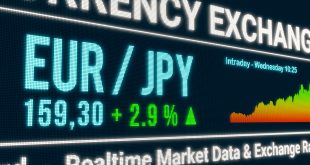Gold prices have surged to record highs, driven by a confluence of factors, most notably the implications of US tariffs on global trade. This surge reflects gold’s traditional safe-haven appeal amidst economic uncertainty. The precious metal is up +0.77% at the time of writing; trading at 2,818.82 per ounce and could even touch fresh highs.
Tariff Tensions and the US Dollar
US tariffs on key trading partners have been a significant market driver. The US Dollar Index (DXY) initially strengthened following the implementation of tariffs, reaching a two-week high. However, the dollar’s gains were tempered by the delay of tariffs on Mexico, following an agreement between the two nations. Tariffs on Canada and China remain in place, although discussions are ongoing. These tariff dynamics have directly influenced gold prices, contributing to its upward trajectory.
Economic Data and Fed Outlook
Beyond tariffs, investors are closely monitoring key US economic indicators, including the Nonfarm Payrolls (NFP) report and communications from Federal Reserve officials. Recent data, such as the Institute for Supply Management (ISM) Manufacturing PMI, which showed improvement in US business activity, provides further context for market sentiment. The ISM report also revealed increasing input costs and improved employment conditions within the manufacturing sector. These data points, combined with commentary from Fed officials like Susan Collins and Raphael Bostic, contribute to the ongoing assessment of the economic landscape and potential future monetary policy decisions.
Market Dynamics and Technical Outlook
The US 10-year Treasury yield has seen some fluctuations, while US real yields, as measured by the 10-year Treasury Inflation-Protected Securities (TIPS), have remained relatively stable. These factors also play a role in gold’s price movements.
From a technical perspective, gold’s uptrend remains robust, having recently reached an all-time high. Geopolitical uncertainties, including ongoing conflicts, further bolster gold’s appeal. Key resistance levels are being monitored, with potential targets identified based on Fibonacci retracements and extensions. Conversely, potential support levels have also been identified, should the price of gold retreat. These technical levels provide a framework for understanding potential price movements in the near term.
The interplay of trade policies, economic data, and central bank communications continues to shape market dynamics and influence the price of gold. The current environment reflects a complex interplay of global economic forces, suggesting that gold’s role as a safe-haven asset will likely remain prominent.
 Noor Trends News, Technical Analysis, Educational Tools and Recommendations
Noor Trends News, Technical Analysis, Educational Tools and Recommendations





